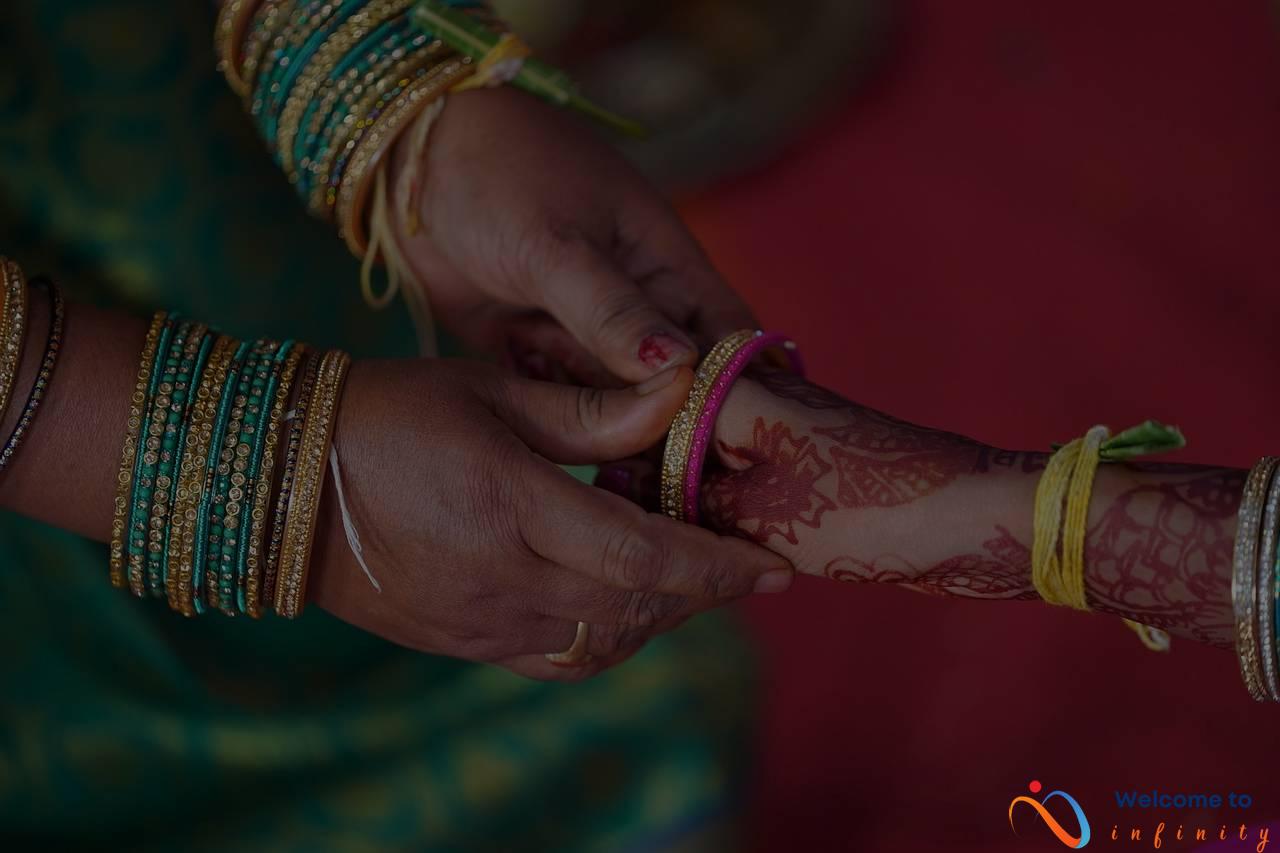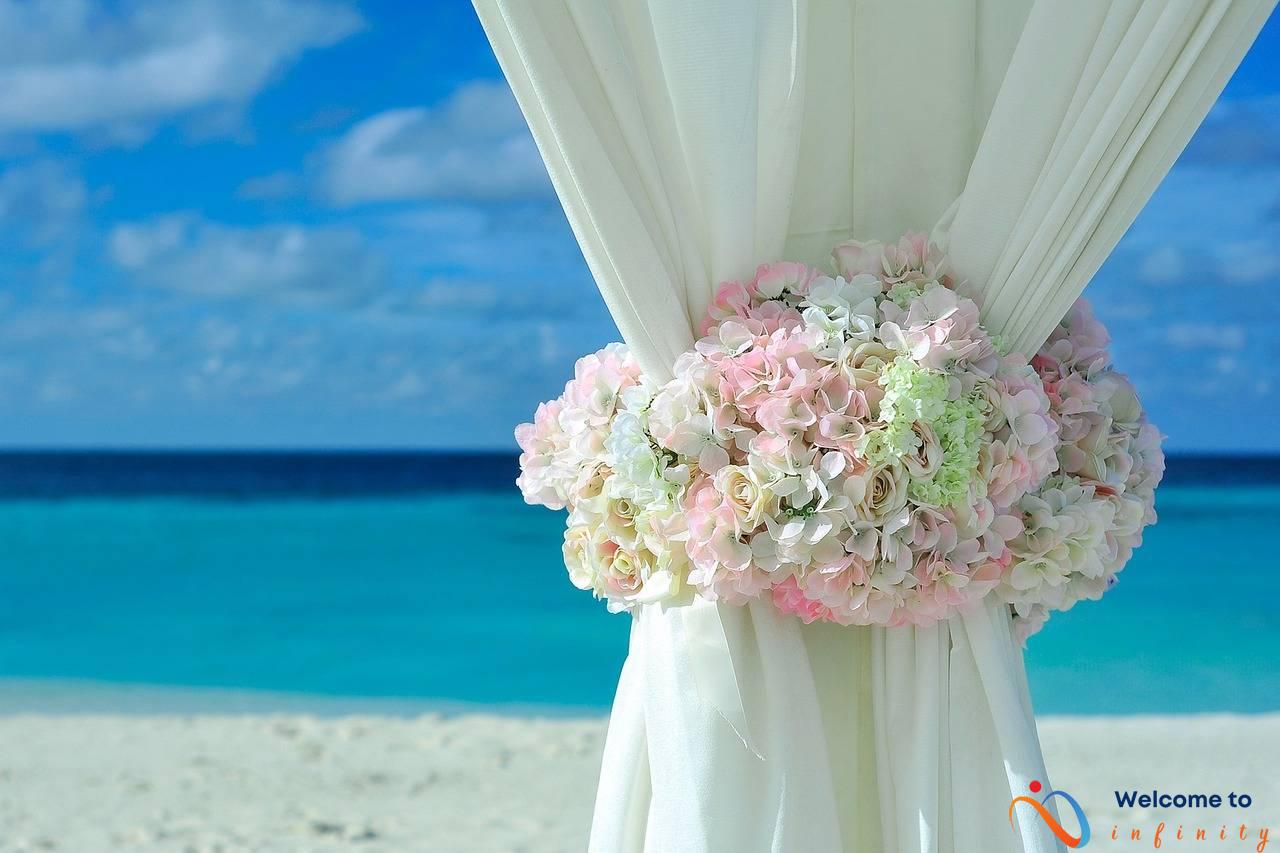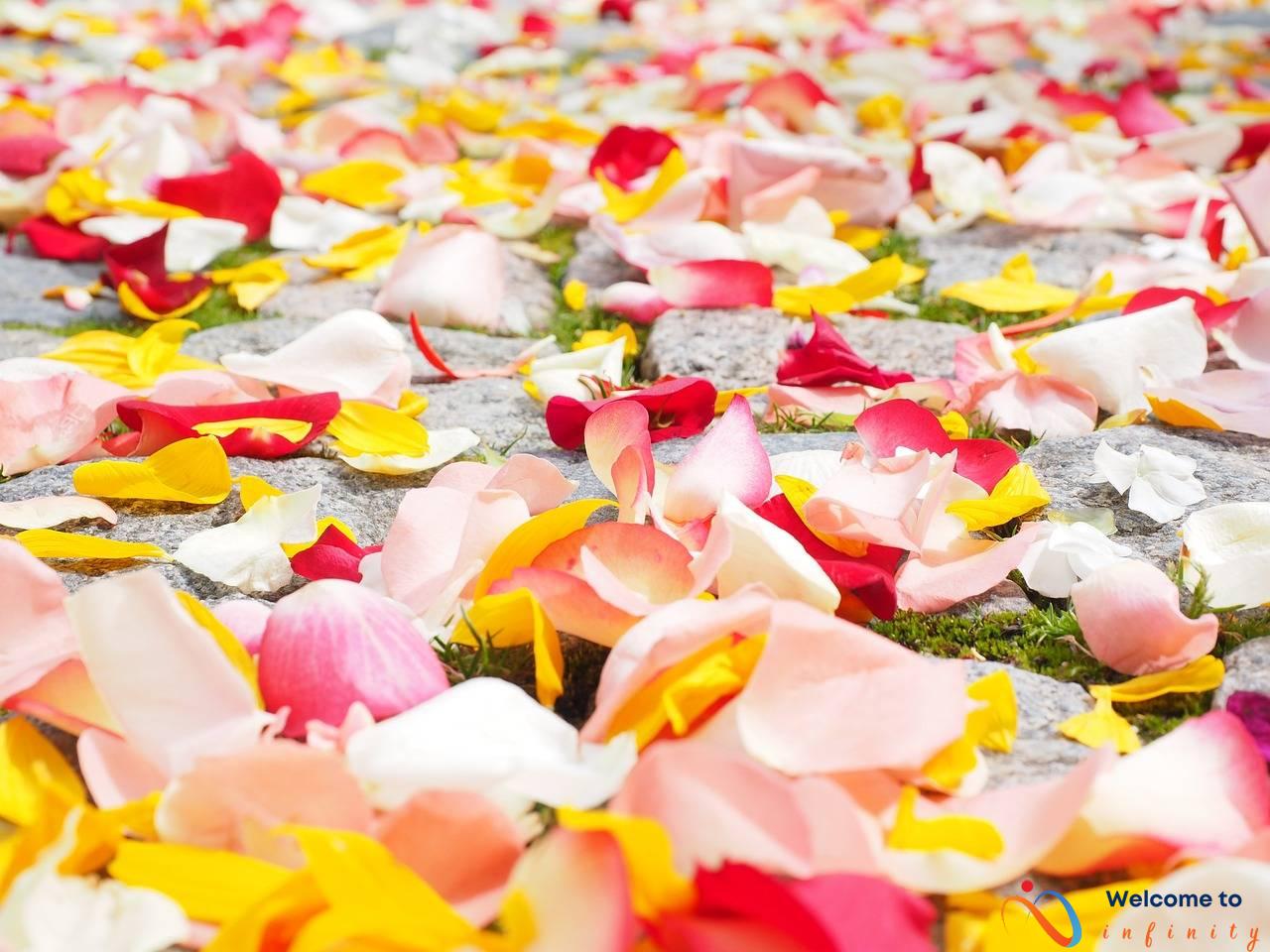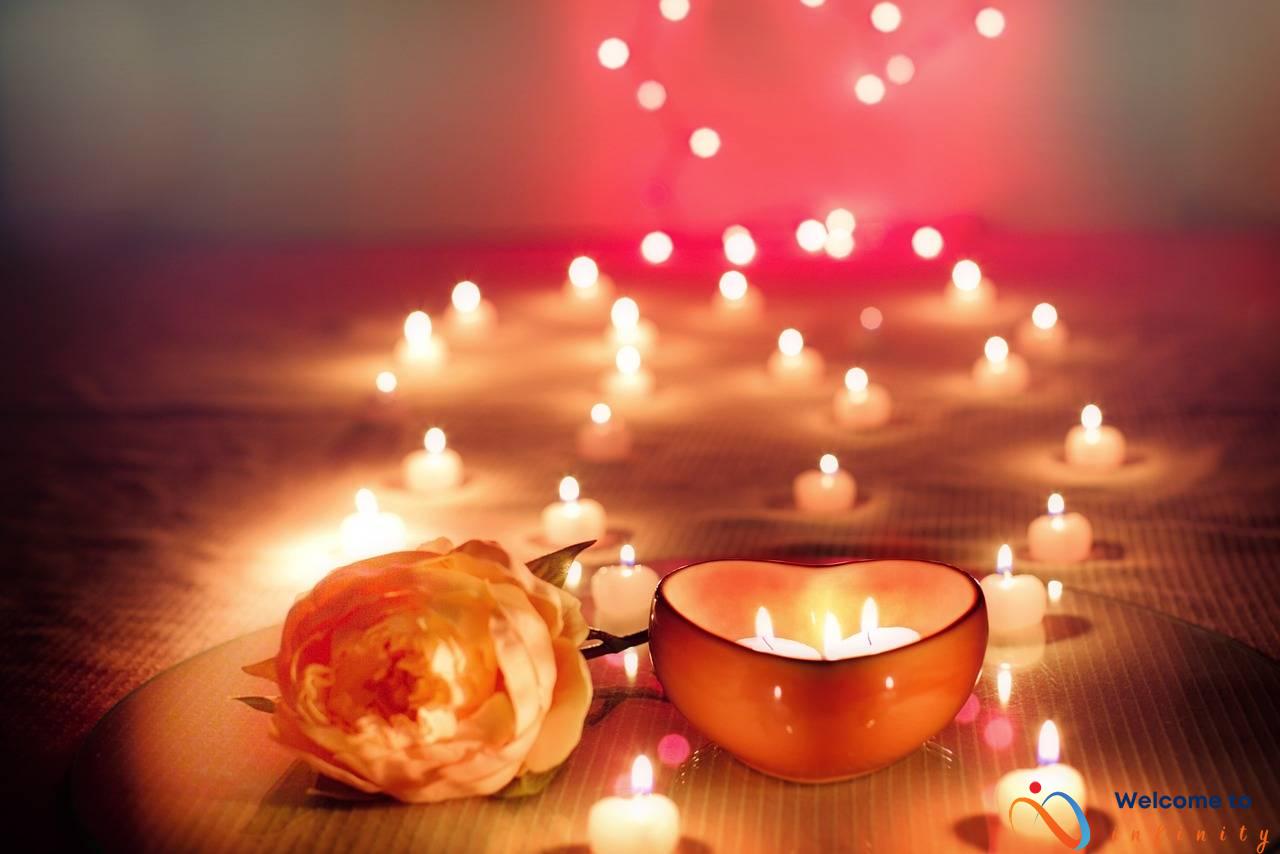If you or your partner come from different cultural backgrounds, incorporating both cultures into your wedding celebration is essential. One way to do this is by creating wedding invitations that represent both families' traditions and cultural symbols. In this article, we'll provide tips on how to design multicultural wedding invitations that are respectful, aesthetically pleasing, and personalized.
Firstly, it's crucial to understand the cultural significance of each family's traditions and symbols. By learning about each other's cultures, you can better appreciate and incorporate these elements into the design. Before starting the invitation design process, sit down with both families to discuss the symbols, colors, and language that hold particular significance.
Researching different design styles is also helpful when creating multicultural wedding invitations. Consider blending traditional design styles from both cultures to create an aesthetically pleasing invitation. Mixing and matching different cultural styles can create a unique and personalized invitation that is representative of both families. There are numerous examples of successful cultural weddings that have incorporated traditional elements, so it's essential to find inspiration and ideas that will help you create an invitation that reflects your unique cultures.
Color and imagery also play an essential role in incorporating cultural symbolism into wedding invitations. Each culture has distinct symbolic colors and images that you can use in the invitation design. Incorporating these elements into the invitation design can create a unique and meaningful representation of both families.
Language and wording are the final details to consider. If there are different languages, consider incorporating both languages throughout the invitation. Work with both families to ensure that the wording reflects their traditions and preferences. Accurate and respectful translation is crucial when it comes to creating multicultural wedding invitations that reflect both cultures.
Invitation etiquette is also an important consideration when creating multicultural wedding invitations. Understanding families' preferences and traditions concerning the invitations is essential. Additionally, ensure that the invitations are delivered and distributed appropriately and respectfully to both sides of the family.
Understand the Cultural Significance
The wedding is the most important day in any couple's life. For a multicultural couple, the wedding signifies not only the unification of two people but also the merging of two cultures. As such, it is important to ensure that the wedding invitations reflect both families' traditions and cultural symbols.
Wedding invitations are not just a piece of paper; they are a representation of the couple's love and the families involved. When designing wedding invitations, it is important to acknowledge cultural significance. Every culture has its own style, design elements, symbolism, and tradition when it comes to weddings. Therefore, it is essential to research and understand the cultural significance behind each element.
By incorporating both cultures into the invitations, you show that each family's traditions and beliefs are respected and appreciated. It is an opportunity to acknowledge and celebrate both cultures equally while also creating a unique blend of the two.
To ensure that the invitations represent both cultures, it is crucial to work closely with the couple and their families. Understanding the families' preferences and traditions regarding the invitations will help you create an invitation that meets everyone's expectations.
The identity of the couple and their families should be represented in the invitation design. It is essential to choose design elements that reflect their cultures, such as color, symbols, or patterns. By doing so, you create an invitation that honors both cultures and makes the process even more special and memorable.
- Researching and understanding both cultures' symbolism and significance is vital when designing wedding invitations to avoid offending anyone.
- Collaborating with the couple and their families to include their traditions and preferences is essential to make everyone feel included and respected.
- Choosing design elements that reflect both cultures and blend them together will create a unique invitation that honors both families.
By including both families in the creation of the wedding invitations, you make the invitation a statement of unity and inclusion. It is an opportunity to celebrate the diversity that both cultures bring to the wedding, making it truly special and unique.
Research Design Styles
Wedding invitations are an important part of any wedding ceremony, and they should not only inform guests of the event but also reflect the bride and groom's personalities and cultural backgrounds. When creating wedding invitations for multicultural weddings, it's crucial to find a balance and blend both cultures' elements to create something unique and special. Here are some research design styles to incorporate both cultural elements in wedding invitations.
Firstly, you can try using a traditional design style that reflects both cultures. For instance, if cultural elements have a similar color scheme, it's possible to use that to create an aesthetically pleasing invitation. However, suppose different design elements from both cultures do not complement each other. In that case, you can try adding a neutral color or pattern that incorporates both styles. This leads us to the next point of mixing and matching styles.
Mixing and matching styles can also be a great way to create something unique and personal. For instance, you can use the traditional invitation style with a modern twist or vice versa. You can also combine traditional designs from different cultures, such as patterns or styles, to create an invitation that is more eclectic. This will require careful thought and consideration, as it's important not to mix and match in a way that feels forced or disjointed.
Finally, you can also get ideas from real-world examples of multicultural wedding invitations that have already succeeded in representing both cultures. Several resources and websites can offer inspiration for unique design ideas for your wedding invitations. For instance, you can look for ideas on Pinterest or follow a particular designer known for creating beautiful multicultural wedding invitations.
In conclusion, when creating multicultural wedding invitations, it's essential to understand the cultural significance and the families' preferences and traditions. Researching different design styles and finding ways to incorporate both cultures into one invitation can create a uniquely beautiful and meaningful wedding invitation that guests will cherish.
Mixing and Matching Styles
When it comes to creating multicultural wedding invitations, blending both cultures' traditional design elements can be a challenge. However, the result can be a beautiful and meaningful invitation for both families to cherish for years to come. Here are some tips on how to mix and match styles to create an aesthetically pleasing invitation.
- Start by identifying the design elements of each culture that are most important to both families, such as colors, patterns, symbols, or imagery.
- Choose a unifying theme or color scheme that can tie the two cultures together. For example, if one culture uses bright and bold colors, while the other prefers neutrals, choose colors that complement each other rather than clash.
- Experiment with different design styles, such as traditional, modern, or minimalist, to see what works best for blending the two cultures.
- Consider mixing and matching textures, such as incorporating embossed or textured elements to add depth to the invitation.
- Use both cultures' fonts and calligraphy styles to add a personal touch to the invitation.
Remember to work closely with the graphic designer or printer to ensure that the final product looks cohesive and represents both cultures equally. By mixing and matching styles, you can create a one-of-a-kind wedding invitation that represents the unique union of two cultures.
Examples of Successful Design Combining
If you're struggling to envision how to blend cultural design elements in your wedding invitations, draw inspiration from these real-world examples of successful design combining.
| Example Invitation | Cultural Elements | Mixing and Matching |
|---|---|---|
 |
The invitation featured traditional Chinese red and gold colors and patterns, as well as Japanese cherry blossom imagery. | The designer successfully combined both cultures by using the red and gold colors throughout the invitation, in addition to incorporating cherry blossom imagery within the design. The invitation also featured both Chinese and Japanese language text. |
 |
The invitation featured traditional Indian paisley patterns and bright jewel tones, as well as American-style script font and paper stock. | The designer combined the cultural elements by using the paisley patterns in the background of the invitation and using the jewel tones as pops of color throughout. The script font gave an American touch, while the paper stock was high-quality, like traditional Indian wedding invitations. |
When admiring these successful designs, pay attention to how they take elements from both cultures and create a cohesive and visually appealing invitation. Remember, cultural blending isn't about creating a hodgepodge of random elements; rather, it's about thoughtfully incorporating elements in a way that pays respect to both cultures while also being aesthetically pleasing.
Where to Find Design Inspiration
Finding design inspiration for multicultural wedding invitations can be overwhelming, but it doesn't have to be. The internet is a great resource with numerous websites and blogs dedicated to wedding invitations. Here are a few websites that you can use to find inspiration for your multicultural wedding invitations:
- Brides.com: This website has a vast collection of wedding invitation ideas from various cultures and themes. It is an excellent resource for anyone looking to incorporate cultural elements in their wedding invitation design.
- Minted: This website has a large selection of invitations, including multicultural designs. They offer a variety of customization options, allowing you to create a personalized invitation that represents both cultures.
- Zazzle: This website has a broad range of multicultural wedding invitations that you can customize to your liking. They offer everything from traditional to modern designs.
Aside from these online resources, you can also find inspiration from wedding invitation designers or artists who specialize in multicultural designs. It never hurts to look at a physical portfolio of some wedding invitation designer if you want to find more inspiration. Don't hesitate to take a brief look at Culture-laden designs for inspiration.
When browsing for inspiration, take note of the design elements that are significant to your cultural backgrounds and look for ways to incorporate them into your invitation design. For example, you can use traditional patterns and colors on the invitation, incorporate both languages on the invitation, or include symbols unique to each culture.
In conclusion, finding inspiration for multicultural wedding invitations is not as daunting as it may seem. Utilize the numerous resources available online and seek out designers specializing in multicultural designs. Remember to stay true to your cultural backgrounds and incorporate elements that will represent both families.
Cultural Symbolism in Colors and Images
When it comes to incorporating traditional cultural elements into wedding invitations, colors and images are some of the most important components to consider. Each culture has its own unique symbolism and meaning associated with particular colors and imagery. Understanding these cultural symbols can help you create a truly representative and meaningful invitation that blends both backgrounds seamlessly.
One important factor to consider when incorporating cultural symbolism is color. Different cultures may have different symbolic meanings associated with particular colors. For example, red is considered a lucky color in many Asian cultures, while blue may represent purity and holiness in certain Hindu traditions. By learning about these cultural meanings, you can choose colors that are relevant and respectful to both families.
Images are another important way to include cultural elements in wedding invitations. For example, traditional motifs such as the peacock in Indian culture or the dragon in Chinese culture can add meaningful visual elements to the invitation. Other cultural symbols, such as flowers or specific patterns, can also be incorporated in the design to represent each family's background.
When creating a multicultural invitation, it's important to strike a balance between the two cultures so that neither feels overshadowed or under-represented. One way to achieve this is by using a color palette that blends the colors of both cultures. Another option is to use imagery that incorporates both cultures, such as a lotus flower with a henna-inspired design.
Incorporating cultural symbolism in your wedding invitation can be a beautiful way to honor and celebrate both families' backgrounds. By considering the colors and images that hold meaning for each culture, you can create a truly unique and representative invitation that sets the tone for your multicultural wedding celebration.
Language and Wording
When creating multicultural wedding invitations, incorporating multiple languages and wording styles can be a great way to represent both cultures. It is important to consider the primary language spoken by each family and include invitations in each respective language.
When combining languages, it is essential to accurately translate all the information included in the invitation and ensure that it is respectful towards both cultures. One tip is to hire a professional translator or ask someone who is fluent in the language to review the wording.
Blending traditional and modern wording styles can also reflect both cultures in wedding invitations. For example, including formal language for one culture and modern language for the other culture can showcase the unique traditions of both families.
It is also a good idea to consider the tone of the invitation when choosing wording styles. For example, if one culture values formal invitations, incorporating formal language and titles may be appropriate. In contrast, if the other culture values a more casual tone, using simpler and modern language may be suitable.
Lastly, including a brief explanation of any cultural or religious traditions mentioned in the invitation can be beneficial, especially for guests who may not be familiar with them. This can be achieved through a small note or footnote in the invitation.
When designing multicultural wedding invitations, language and wording play a significant role in representing both cultures. By thoughtfully considering language choice, translation accuracy, and wording styles, invitations can reflect the unique traditions of both families.
Translating Across Languages
When it comes to multicultural wedding invitations, language plays a crucial role in accurately representing both cultures. Depending on the families' backgrounds, the invitations may need to be translated into multiple languages. It's important to ensure that translations are accurate and respectful to avoid any miscommunication or offense.
One way to ensure accurate translations is to work with a professional translator who is fluent in both languages. They can translate the information while also ensuring that culturally specific wording and phrasing are used. Another option is to use online translation tools, but be cautious as they may not always provide accurate translations.
It's also important to consider the layout and design of the invitation when incorporating multiple languages. Incorporating both languages side-by-side can create a cluttered and confusing appearance. Instead, consider using a different font or color to distinguish the different languages.
When it comes to addressing guests, make sure to use proper titles and pronouns for each language and culture. Research cultural customs for addressing guests, such as the use of honorifics or the order of names.
Overall, paying attention to language and translation when creating multicultural wedding invitations ensures that both families and cultures are accurately represented and respected.
Blending Wording Styles
When blending wording styles for multicultural wedding invitations, it's important to find a balance between traditional and modern language to accurately reflect both cultures. One way to do this is to use traditional wording for certain aspects of the invitation, such as the names of the bride and groom, while incorporating modern language for other details like the location and time of the wedding.
It's also important to consider the cultural significance of certain phrases or languages when blending wording styles. Double-check any translations to ensure that they are accurate and respectful to both cultures.
In addition, using a mix of fonts can help to visually represent both cultures on the invitation. Consider using a traditional font for one culture's wording and a modern font for the other culture's wording.
Don't be afraid to get creative with wording as well. Consider using metaphors or analogies that are specific to each culture to add a personal touch to the invitations. For example, incorporating a saying or phrase that is commonly used in one culture can add meaningful depth to the invitation while representing that culture.
Overall, blending wording styles for multicultural wedding invitations requires sensitivity and creativity. By finding a balance between traditional and modern language and using appropriate fonts and translations, you can create invitations that accurately reflect both cultures while celebrating the coming together of two families.
Invitation Etiquette
Creating multicultural wedding invitations is more than just about blending design styles from both cultures. It also involves considering important etiquette considerations that ensure that both sides of the family feel included and respected.
Firstly, it is essential to understand the families' preferences and traditions when it comes to invitations. It may be helpful to speak to family members from both cultures and get their input on what they would like to see in the invitations. This will ensure that the invitations reflect both cultures and make both families feel equally represented.
Secondly, it is crucial to ensure that the invitations are delivered and distributed appropriately. It is best to send the invitations to each family's respective elders, who can help ensure that they reach all family members in a respectful and appropriate manner.
Moreover, it is also important to be sensitive to any language barriers that may exist. If possible, include the invitation in both languages and ensure that the translation is accurate and respectful. It may also be helpful to indicate on the invitation which language the RSVP should be in.
Lastly, it is essential to keep the wording and overall tone of the invitation respectful and inclusive. Try to blend traditional and modern wording styles to reflect both cultures and avoid any offensive language or cultural stereotypes.
By following these important etiquette considerations, you can ensure that the multicultural wedding invitations you create show respect and inclusivity for both families.
Families' Preferences and Traditions
Understanding the families' preferences and traditions regarding wedding invitations is crucial when creating multicultural invitations. It is important to communicate with both families on what their preferences and traditions are to ensure that all necessary information is included in the invitations. Some families may prefer a more traditional approach, while others may want a modern take.
One way to gather information is to have a meeting with both families and discuss what they expect from the invitations. It is also important to ask about any specific religious traditions or customs that need to be included. For example, some cultures may require the inclusion of certain phrases or symbols that represent good luck or prosperity.
In some cases, families may want to include their own language on the invitations. This can add a personal touch and show respect for their culture. However, it is important to make sure that the translation is accurate and respects the traditions of both families.
When it comes to design, families may have different preferences on color schemes and imagery. Some cultures may have specific colors that are traditionally used in weddings, while others may have certain symbols or motifs that hold significance. It is important to incorporate these elements tastefully into the invitation design.
Overall, it is essential to listen to the families' preferences and traditions when creating multicultural wedding invitations. By respecting their cultures and understanding their preferences, you can create an invitation that accurately reflects the union of two families from diverse backgrounds.
Delivery and Distribution
When it comes to delivering and distributing multicultural wedding invitations, it's important to ensure that both sides of the family are included and respected. Here are some tips on how to do that:
- Send invitations to both sides of the family at the same time, to avoid any confusion or misunderstandings.
- If language is a barrier, consider sending invitations with translations or including a separate translation sheet.
- Make sure to address the invitations with the appropriate titles and names, taking into account any cultural or familial preferences.
- Consider sending invitations through multiple channels, such as mail and email, to ensure that they are received.
- If there are any specific cultural customs or traditions related to the delivery and distribution of wedding invitations, make sure to research and follow them accordingly.
Remember, the goal is to ensure that both families are included and respected throughout the wedding planning process, starting with the invitations. By taking the time to consider cultural differences and preferences, you can create a wedding invitation that not only represents both cultures, but also shows respect and appreciation for each family.












